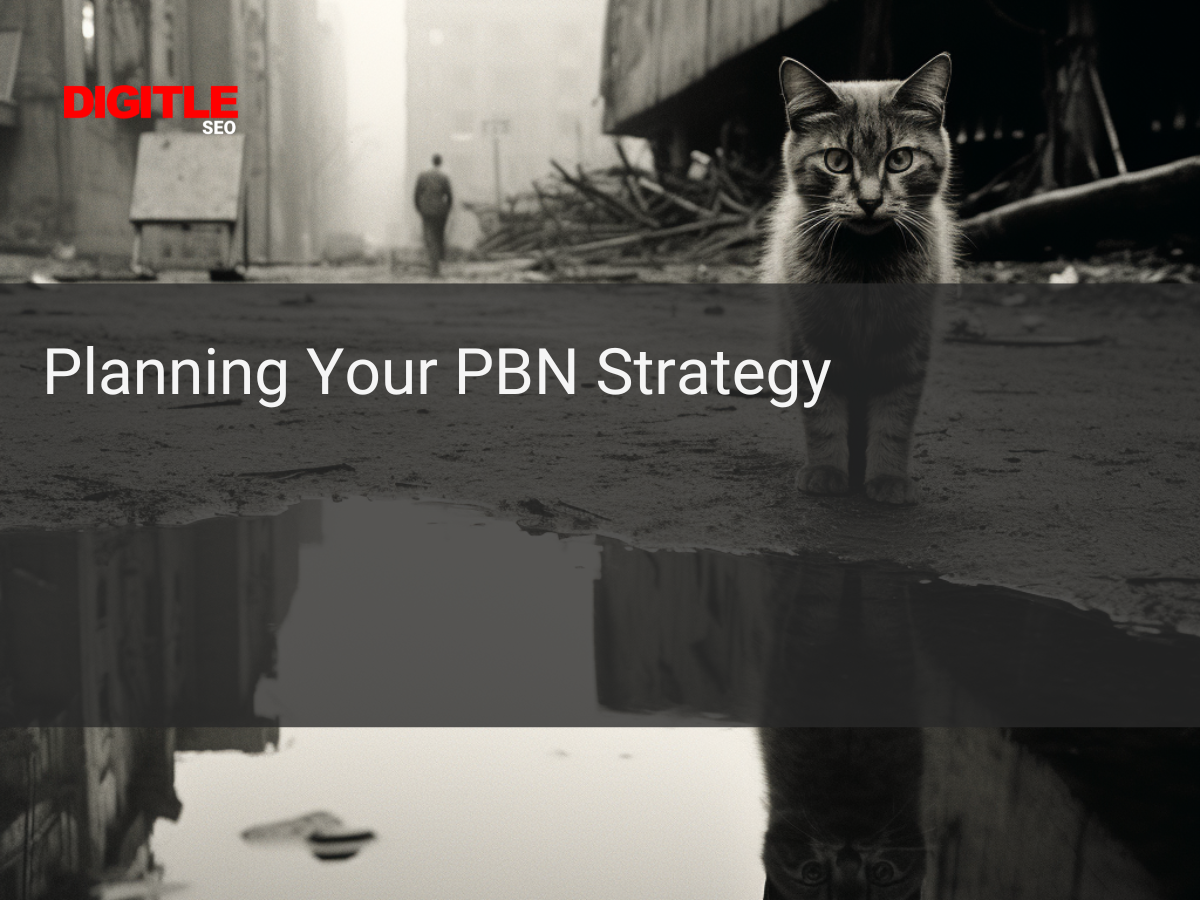How Much Traffic Does A Domain Need To Be A Good Backlink?
Unraveling the Mystery: How Much Traffic Does a Domain Need for a Quality Backlink?
How much traffic does a domain need to be a good backlink? This question is at the forefront of many SEO strategies, and it's not as straightforward as you might think. While there's no definitive number, the quality and relevance of a site are often more important than sheer traffic numbers. In this article, we'll delve into why these factors matter and how they influence your website’s SEO performance.
The importance of high-quality backlinks in search engine optimization (SEO) cannot be overstated. But when it comes to determining what constitutes a "good" backlink, things get somewhat nebulous. It's tempting to assume that sites with heavy traffic automatically provide superior backlinks but remember - Google evaluates link quality based on numerous metrics beyond just raw visitor numbers.
What Makes a Backlink Good?
When considering backlinks for SEO, it's not just about quantity. Quality matters too! So, what makes a backlink good? Let's break it down:
- Relevance: The more relevant the site linking to yours is to your content, the better.
- For example:
- A pet store getting a backlink from a vet clinic: Great!
- A pet store getting a backlink from an auto parts shop: Not so great.
- Authority: Websites with high authority tend to have higher quality links.
- Use tools like Moz’s Domain Authority or Ahrefs’ Domain Rating to check this.
- Traffic: Sites with lots of traffic can be considered good for backlinks, but only if they also meet the relevance and authority criteria.
Here's how these factors weigh in on making a good backlink:
| Factor | Importance |
|---|---|
| Relevance | High |
| Authority | High |
| Traffic | Medium |
Remember,
- All three factors are important.
- Don't sacrifice relevance and authority for traffic alone!
Understanding the Importance of Traffic
When it comes to backlinks, not all domains are created equal. One key factor that makes a domain valuable as a backlink is its traffic volume. Here's why:
- Relevance: A high-traffic website likely has an engaged audience, which can increase your site's relevance and visibility.
- Authority: Search engines often view sites with significant traffic as having more authority, potentially boosting your SEO rankings.
Let's break down how much traffic a domain might need to be considered a good backlink source:
| Traffic Volume (Monthly Visits) | Backlink Quality |
|---|---|
| 1 - 500 | Low |
| 501 - 5,000 | Moderate |
| 5,001 - 25,000 | High |
Of course these numbers aren't set in stone. Other factors like the relevancy of the content and quality of visitors also matter. But generally speaking:
- Domains with over 25k visits per month could provide very high-value backlinks.
- Those between 5k to 25k have potential for solid value.
- Between 501 and 5k, you're looking at moderate value.
- And if under 500, while there could still be some benefit depending on other variables; as far as traffic goes – it would usually fall into low value category.
Remember though – always consider multiple factors when assessing potential backlinks!
Factors to Consider for a Good Backlink
When you're hunting down the perfect backlink, it's not all about traffic. Sure, a high-traffic domain can be beneficial - but there are other factors at play here.
- Domain Authority (DA): DA is score that predicts how well a website will rank on search engine result pages.
- Page Relevance: The page should be relevant to your niche or industry.
- Link Type: A do-follow link passes authority from the hosting page to your site. No-follow links don't pass authority directly, but they still offer value in terms of potential referral traffic and visibility increases.
Here's something useful - a table comparing Do-Follow and No-Follow links:
| Do-Follow Link | No-Follow Link | |
|---|---|---|
| Authority Passed? | Yes | No |
| Referral Traffic Possible? | Yes | Yes |
Remember, it's not just about numbers either!
- Quality over quantity always wins when it comes to backlinks.
- A few good-quality backlinks can do more for your SEO than hundreds of poor-quality ones.
So next time you're looking for domains to target for your backlink strategy, keep these factors in mind!
Analyzing Domain Authority
When considering a backlink, the domain authority (DA) is crucial. It's not just about how much traffic a site gets. DA plays an important role in determining the quality of a link.
- Moz Rank: A key component to calculate DA, MozRank evaluates the number and quality of links pointing to your website. The score ranges from 0-10.
- Moz Trust: Similar to MozRank but it emphasizes on closeness with trusted websites. Score also falls between 0-10.
| Factors | Importance Level |
|---|---|
| Quality Content | High |
| Social Signals | Medium |
| User Experience | High |
- Quality Content: Creating high-quality content attracts organic backlinks, contributing significantly towards increasing DA.
- Social Signals: Shares and likes on social media platforms can influence DA scores.
- User Experience: Make sure your website’s user experience is top-notch; this includes mobile friendliness and loading speed.
Remember - chasing after high DA sites for backlinks isn't always productive if their niche doesn't align with yours!
Evaluating Referral Traffic
Evaluating referral traffic is essential while considering a domain's value for backlinking. Here are some key points to consider:
- Quality over Quantity: High numbers of referrals may appear enticing, but the quality of these referrals matters more. Look for domains sending engaged visitors.
- Bounce Rate: A lower bounce rate indicates that referred visitors find your content relevant and stay longer on your page.
- Pages per Visit & Average Session Duration: These metrics can give insights into how engaged the referred audience is with your content.
Let's break down these factors in detail:
| Metric | Ideal Value | Why it Matters |
|---|---|---|
| Referral Traffic Volume | Higher the Better (But focus on Quality) | High volume shows that many people follow this link, indicating its visibility and relevance |
| Bounce Rate | (Lower) 40% or Less | Low rates suggest that users find the linked content useful enough to explore further |
| Pages Per Visit | (Higher) Above 2 Pages/Visit | More pages viewed means increased interaction with website |
| Average Session Duration | (Higher) More than 2 Minutes | Longer sessions indicate greater engagement |
It’s crucial to evaluate these elements using analytic tools like Google Analytics or Semrush before accepting a backlink from a domain. Remember, successful SEO strategies prioritize quality over quantity!
Case Studies: Successful Backlinks with Varying Traffic Levels
Look at these real-world examples. Each shows how traffic isn't the only factor when choosing a good backlink.
- Website A: High-Traffic News Site
- Domain Authority (DA): 90
- Monthly Traffic: 5 Million
- Outcome: Despite high DA and traffic, little boost in search rankings.
- Website B: Niche Blog
- DA: 50
- Monthly Traffic: 20K
- Outcome: Significant improvement in SERP due to highly relevant content.
What can we learn from this?
1. Quality over Quantity:
Don't just look at the numbers. Context matters! Website A has more traffic, but didn't deliver results as expected because it lacked relevance.
2. Relevant Content Wins:
Even though Website B had less traffic, it provided better results because its niche was closely related to our content.
Here's a table summarizing data:
| Website | DA | Monthly Traffic | Outcome |
|---|---|---|---|
| A | 90 | 5M | Little Boost |
| B | 50 | 20K | Significant Improvement |
In conclusion, don't get blinded by big numbers. Yes, domain authority and site traffic matter for backlinks; however, relevancy should never be overlooked!
Strategies for Building High-Quality Backlinks
Building high-quality backlinks is crucial in SEO. Here are some strategies:
- Guest Blogging: Reach out to blogs and offer quality content with your link incorporated.
- Broken Link Building: Find broken links on websites, suggest they replace the link with a relevant page from your site.
- Influencer Outreach: Connect with influencers in your industry. They might share your content and provide backlinks.
Remember these tips when building backlinks:
- Target reputable domains
- Use anchor text wisely
- Make sure the link adds value to the content
| Strategy | Benefit |
|---|---|
| Guest Blogging | Establish authority, gain exposure |
| Broken Link Building | Helpful for webmasters, replaces lost resources |
| Influencer Outreach | Leverage influencer's audience, gain credibility |
It's not just about quantity; it's also about quality of traffic that makes a domain good for backlinking.
Wrapping Up
So, how much traffic does a domain really need to be a good backlink? There's no definitive answer. The value of a backlink depends on more than just traffic numbers. Quality content, relevance to your niche, and the site's authority also play significant roles.
Remember when hunting for those coveted backlinks: focus less on arbitrary metrics and more on building qualitative relationships with relevant sites in your sphere. This strategy will yield stronger SEO benefits in the long run. Happy link-building!




![Aged Domains Versus Expired Domains [What Is Better?]](https://lirp.cdn-website.com/7c941cf4/dms3rep/multi/opt/4-cde4d733-1920w.png)


